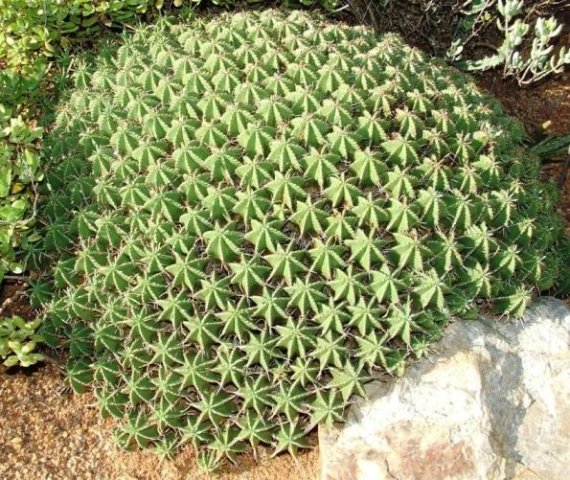Euphorbia pulvinata

Euphorbia pulvinata, commonly the prickly-leaved cushion euphorbia, is a dome-shaped, dwarf stem-succulent reaching 15 cm to 35 cm in height.
The plant has a visible component, the geometrically regular, dome-shaped structure in picture, consisting of stout, evenly growing branches. These finger-like branches emerge from a broad caudiciform base, the invisible component attenuating below into a taproot, unless one digs.
In the growing plant the base broadens gradually over many years as more branches are added. The dome-shape is retained as the central branches grow just so slightly taller above the peripheral ones, like slow-motion soldiers on parade, retaining the attractive regular mound shape as it increases in size. Every branch or stem has seven or eight acute angled ridges, along the edges of which small, sharp spines occur.
Now who would say that one cannot find mathematical beauty and structural engineering genius in a succulent?
The species distribution is widespread in the northeast of South Africa, in the Eastern Cape, KwaZulu-Natal, the Free State, Mpumalanga and Limpopo. It is also found in some neighbouring countries.
The habitat is rocky grassland. The species is not considered to be threatened in its habitat early in the twenty first century (Pooley, 1998; iNaturalist; http://redlist.sanbi.org).

